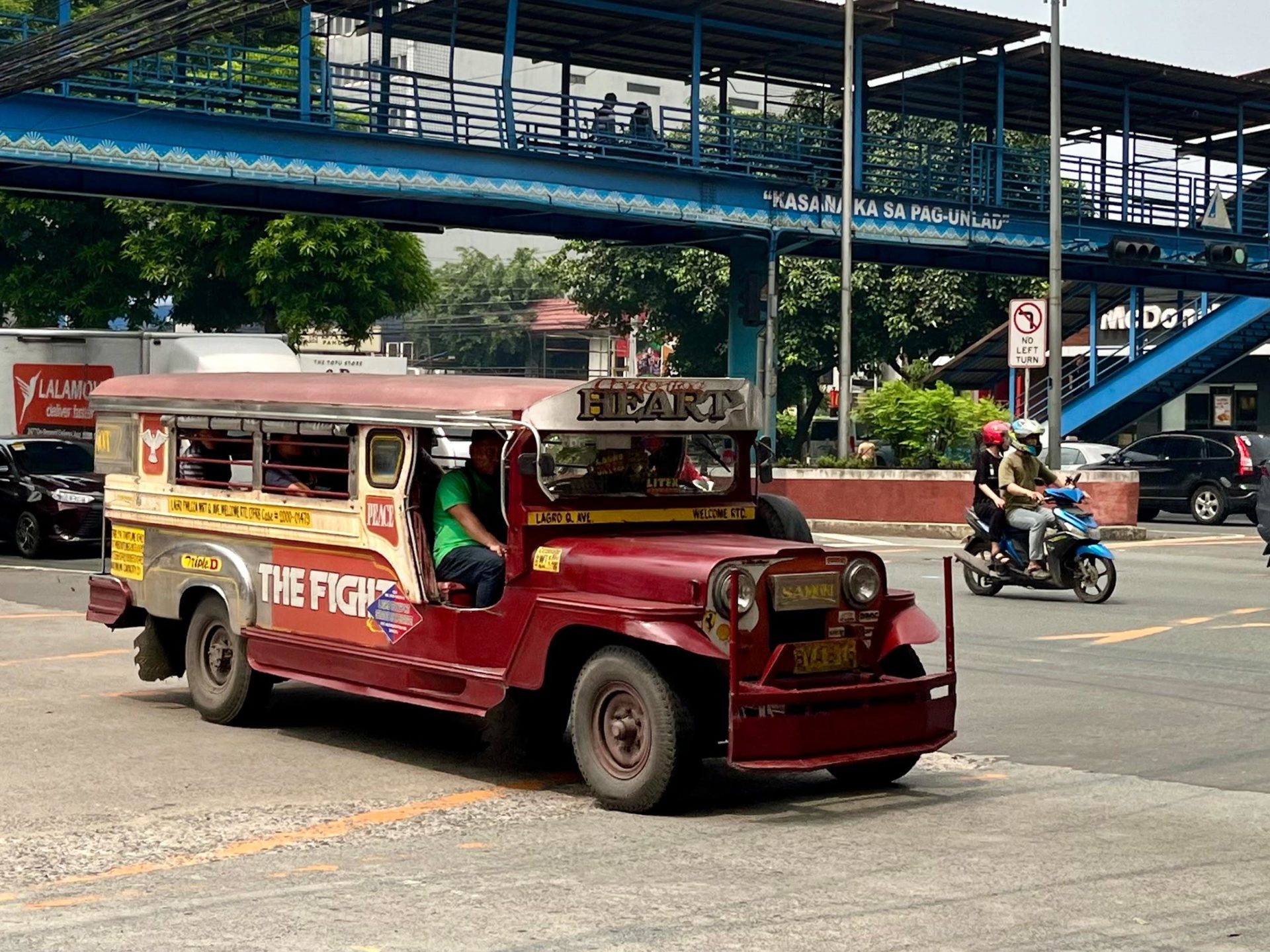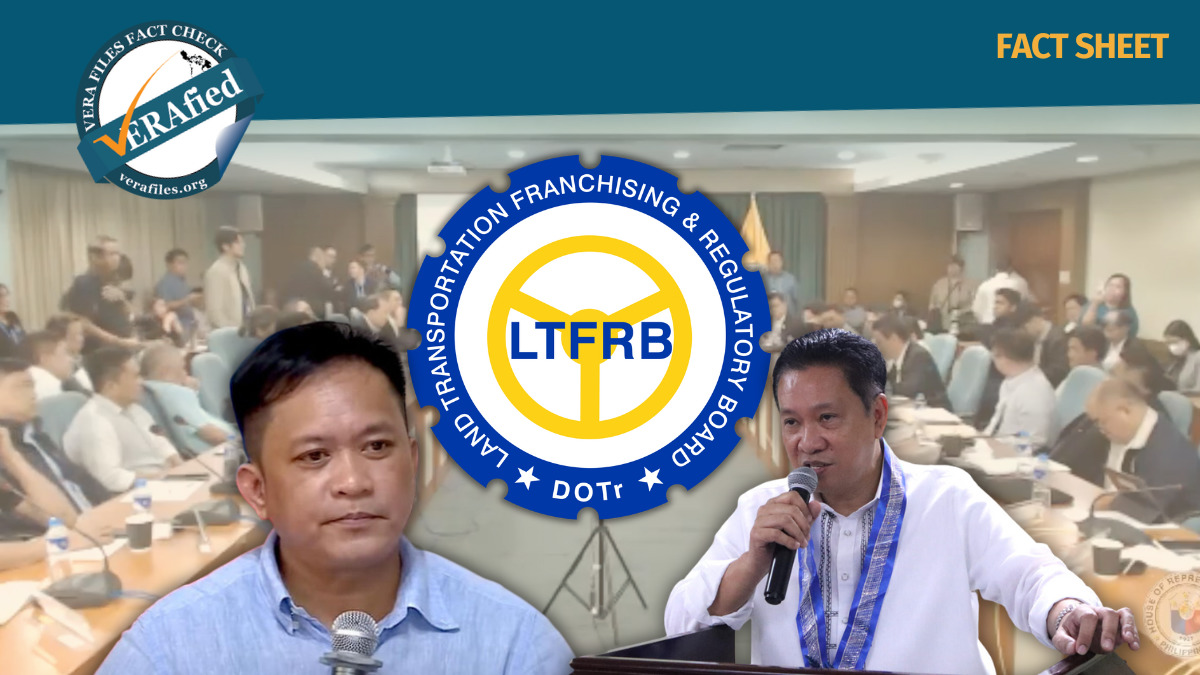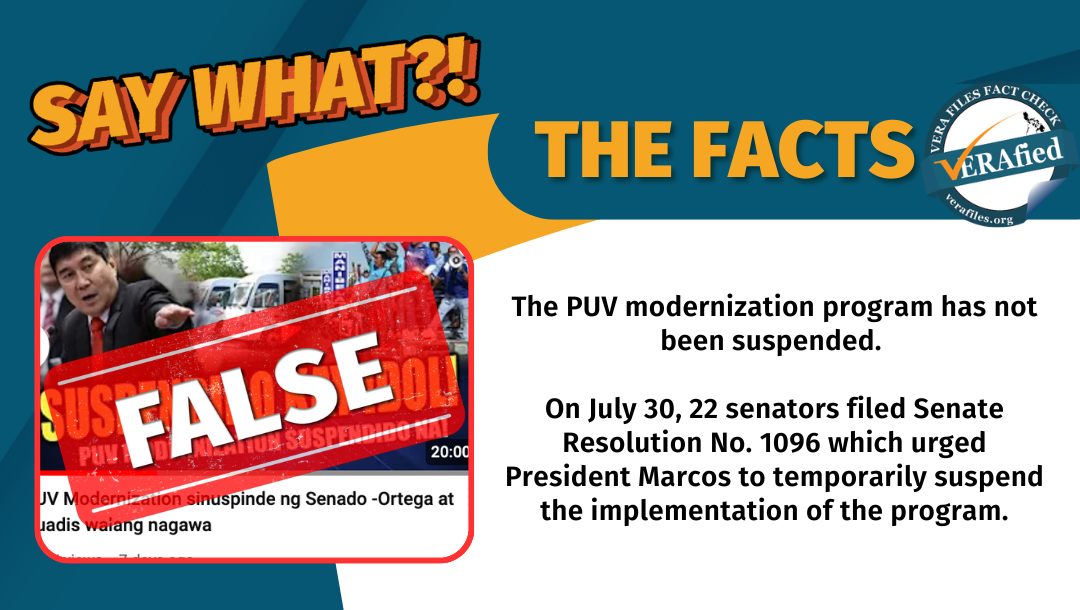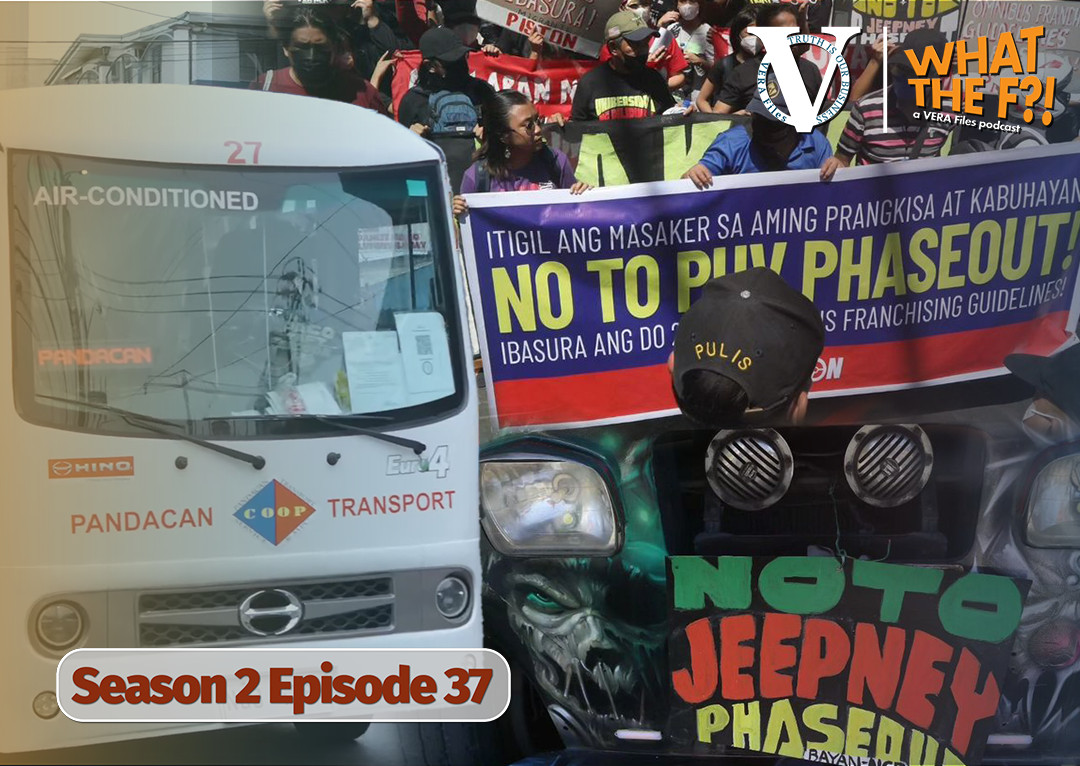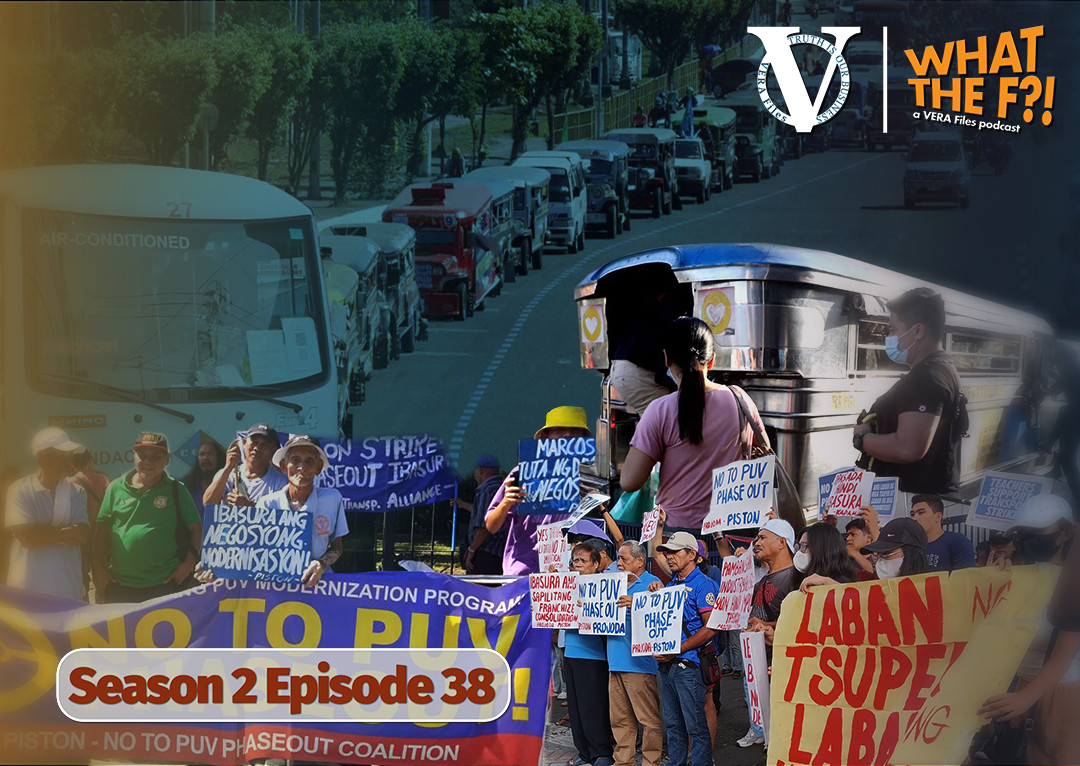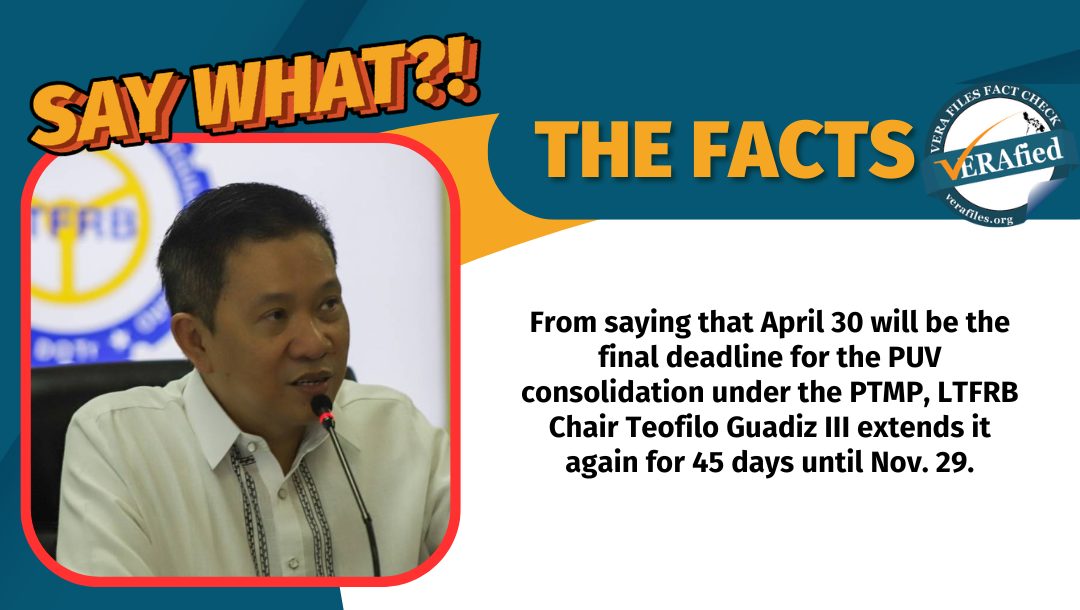More than five months after the extended April 30 deadline had lapsed for franchise consolidation under the Public Transport Modernization Program (PTMP), the future remains bleak for public utility vehicle (PUV) drivers and operators who did not join or form cooperatives.
Teofilo Guadiz III, chairperson of the Land Transportation Franchising and Regulatory Board (LTFRB), said they are now considered “kolorum” (unlicensed).
“Pwede na po silang hulihin on two grounds: Unang-una po, wala kang prankisa (They can be apprehended on two grounds: First of all, you don’t have a franchise) and [f]or failure to register,” Guadiz said in a press conference on Sept. 23.
The PTMP, earlier known as the Public Utility Vehicle Modernization Program (PUVMP), is a 10-component program that includes industry consolidation, local public transport route plan, route rationalization and fleet modernization, which aims to replace traditional PUVs with modern units until 2028,” the Department of Transportation (DOTr) said in its presentation on July 23 before the joint Senate committees on public services and finance.
It is a government program mandated in 2017 primarily to phase out traditional jeepneys, buses and other PUVs that are at least 15 years old, and replace these with modernized vehicles that are supposed to be safer, more efficient and eco-friendly.
However, transport groups Pagkakaisa ng mga Samahan ng Tsuper at Operator Nationwide (Piston) and Samahang Manibela Mananakay at Nagkaisang Terminal ng Transportasyon (Manibela) have been seeking a stop to the PTMP implementation. They held a two-day nationwide transport strike on Sept. 23 and 24, protesting against the modernization program.
What’s ahead for the PUV drivers and operators who refuse to consolidate under the PTMP? Here are four things you need to know:
1. How many PUV units are still unconsolidated under the PTMP?
To date, around 17% or more than 32,000 PUV units are considered unconsolidated. PTMP hoped to have the franchises of 191,730 units consolidated into cooperatives or corporations, the DOTr said in the same Senate hearing.
However, most of the 17% have not been on the road for years, according to Transportation Undersecretary Jesus Ferdinand Ortega.
“‘Yung totoong numero po na hindi talaga o ayaw mag-consolidate (The real number of those who are not or don’t want to consolidate), and we’re talking of the two groups [Piston and Manibela], that’s more or less mga 5% po ‘yon,” he said in the Sept. 23 press conference. That brings the estimated number of unconsolidated units to around 9,500.
For Manibela, chairperson Mar Valbuena said their drivers who are not consolidated under the program still go on trips in more than 200 routes nationwide.
“May nag-consolidate man, pero ‘yun eh, mga natakot lang, kasi doon sa lugar ay may mga kalaban silang kooperatiba na kapag hindi sila magko-consolidate, tatanggalin sila sa ruta,” Valbuena said.
(There were a few who consolidated only because they were afraid because there were cooperatives in their area and if they didn’t consolidate, they’d lose the route.)
These consolidated Manibela drivers still take part in the transport group’s strikes, he clarified.
2. What options does the government provide for unconsolidated jeepney drivers?
“Bibigyan ho namin ng pagkakataon. (We will give them a chance). They can join existing cooperatives and corporations pero hindi po sila pwedeng bumuo ng korporasyon (but they cannot establish a corporation),” Guadiz said.
Guadiz added, “We give them training sa (in) TESDA [Technical Education and Skills Development Authority] and we give them compensation also, parang panimula sa negosyo (to start a business).”
TESDA has a Tsuper Iskolar program which provides free skills training and assessment to jeepney drivers and other stakeholders in the transport industry who were displaced because of the modernization program, based on a media release dated April 4, 2019.
However, Valbuena said he believed this initiative did not benefit the drivers on the ground, noting that none of the Manibela drivers had enrolled in the program.
3. What awaits the drivers left behind in the modernization process?
Jerico Macalalad, a 23-year-old with only a year of experience as a jeepney driver, said, “Hindi ko pa masasabi kung saan kami pupulutin kasi pare-parehas kami sigurong mahihirapan maghanap ng hanap-buhay.”
(I still can’t tell where we’ll end up because we will all probably have a hard time looking for jobs.)
“Siguro ‘yung mga bata, pwede pa do’n (TESDA program) pero kaming medyo may edad na, hindi na kaya,” said Ceasar Rillo, a 64-year-old driver. He explained that drivers without college degrees will have difficulty finding jobs if PTMP would push through.
(Maybe the younger drivers can do that but for us, senior drivers, it may not be possible.)
Ferdie Medina, a jeepney driver for more than two decades, said that a fixed daily wage of P500 to P600 for jeepney drivers under the program is not enough to support the basic needs of his three children, two of whom are still in school.
In the same Senate hearing, Guadiz said the DOTr provides a P280,000 equity subsidy for the acquisition of a modern unit, which requires P42-billion funding until 2030 to replace 150,000 jeepneys. The agency will also assist the cooperatives through capacity-building training on compliance, fleet management, financial plan and driver safety and ethics.
However, the budget the DOTr requested for the equity subsidy is staggered until 2030 when the modernization will end. Ortega said that since 2018, the agency had allocated P4 billion for the equity subsidy. DOTr is requesting Congress for P4.9 billion for 2025.
Senate President Francis Escudero criticized the agency for setting a consolidation deadline before they could have adequate funds to subsidize the replacement of all traditional units.
He said, “Bakit hindi niyo isabay ‘yung phaseout depende sa pondo na meron kayong ia-alok sa mga magmo-modernize?”. (Why don’t you implement the phaseout in increments according to the funds that you have to offer to those who will modernize?)
4. What will make unconsolidated jeepney drivers join the program?
“Pasahurin nila kami ng [P]1,500 isang araw, magmo-modern kami,” said Popoy Dela Cruz, a jeepney driver who refused to consolidate.
(Give us a daily salary of P1,500, then we’ll modernize.)
Dela Cruz explained that the fixed salary is a financial loss to drivers. Deducting the expenses for fuel, food and other costs for a day of driving a jeepney, a driver is left with P600 to P1,000 daily earnings.
“Ibig sabihin kasi ng P600, P700 na kinikita…nasa bulsa na ‘yon. Labas na lahat ng expenses,” said Dela Cruz. (What earning P600 to P700 means…that’s the net income, all expenses excluded.)
But with a fixed salary, Medina said, “Hindi na pwedeng tumaas. Hanggang doon lang ang sahod mo.” (It cannot increase. That’s the limit of your income.)
The jeepney drivers assert that they will continue to protect their livelihoods. They said that protest rallies will continue against the modernization program that will displace many of them.
